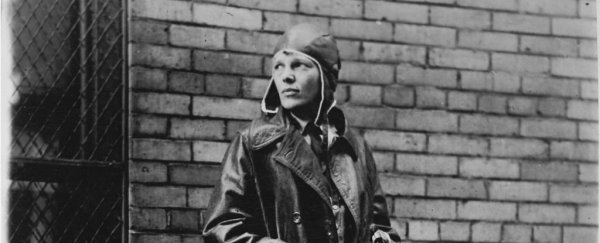In 1937, Amelia Earhart attempted to circumnavigate the globe in a Lockheed Model 10 Electra aircraft with her co-pilot, Fred Noonan.
After a successful start, their plane disappeared somewhere over the Pacific, and they were never heard from again, sparking a mystery that is still hotly debated to this day.
Now, almost 80 years later, an international team of researchers says that previously dismissed skeletal remains found on a remote island might belong to the famed pilot, suggesting that she died a castaway, and not at sea.
In case you need a refresher, the story of Earhart's disappearance is almost as famous than the aviation feats she accomplished in her lifetime, such as becoming the first woman to fly solo across the Atlantic Ocean.
The story goes that Earhart and Noonan took off from Miami, Florida on 1 June 1937 in an attempt to circumnavigate the globe. The duo flew a remarkable 35,405 kilometres (22,000 miles), making stops in places like South America, India, and New Guinea along the way.
On 2 July 1937, they took off from Lae – the second largest city in Papua New Guinea – heading towards Howland Island, a very small patch of land in the Pacific. But Earhart and Noonan got lost while heading there, and disappeared over the Pacific after losing radio contact.
They were never seen or heard from again, and their remains have never been found. Earhart was declared legally dead on 5 January 1939 after all search efforts failed to produce any evidence of her whereabouts.
Ever since the disappearance, researchers, conspiracy theories, and even government officials have tried and failed to piece together the duo's final moments. None have been successful, causing a slew of hypotheses to arise – some more credible than others.
Now, a new piece of evidence – which is actually an old piece of evidence revisited – has researchers thinking that Earhart might have died as a castaway on a small island called Nikumaroro, Barbara Maranzani reports for History.
Nikumaroro was considered uninhabited until 1938, and it lies roughly 563 kilometres (350 miles) southeast of Howland Island, which sits just north of the equator in the central Pacific Ocean.
According to researchers from the International Group for Historic Aircraft Recovery (TIGHAR) – a group that's been investigating Earhart's disappearance for 25 years now – Nikumaroro Island is littered with artefacts that might have belonged to Earhart or Noonan.
Some of these items include flight jacket buttons, a mirror, aluminium sheets, and even anti-freckle cream that some think Earhart might have kept with her. They also say that, based on sonar imagery, Earhart's plane might lie off the island's coast under 201 metres (660 feet) of ocean water.
But the most intriguing piece of evidence is a skeleton that was found on the island back in 1940. Upon initial investigation by an unnamed British medical examiner, the bones were dismissed as nothing more than a castaway that was most likely a male.
Then, in the 1990s, the file was reopened, and a new examiner said the bones were likely female, and matched Earhart's specific height. The bones have since been misplaced, leaving nothing but photos of them.
Fast-forward to earlier this year, when the files were once again reopened by Richard Jantz, professor emeritus of forensic anthropology at the University of Tennessee.
He found that the skeleton's forearms were longer than expected, which was a common trait in women who were born around the same time as Earhart (in 1897), reports Maranzani.
The TIGHAR team suggests that this feature, which was verified by private forensic imaging specialist Jeff Glickman, who compared the bones to images of Earhart, hints that the bones might belong to her, though they are unwilling to fully jump to the conclusion.
And unfortunately, the bones are no longer around to investigate the claim further.
"The match does not, of course, prove that the castaway was Amelia Earhart, but it is a significant new data point that tips the scales further in that direction," the team said.
While this discovery is a step in the right direction for figuring out what happened to Earhart and Noonan, it's important to note that none of the work has been peer-reviewed, which means we have to remain skeptical of the results for now.
The next step for the team is to set up another trip to the island to see if there is any more evidence to be collected. Hopefully, we might then have enough data to finally be able to put an end this mystery once and for all.
